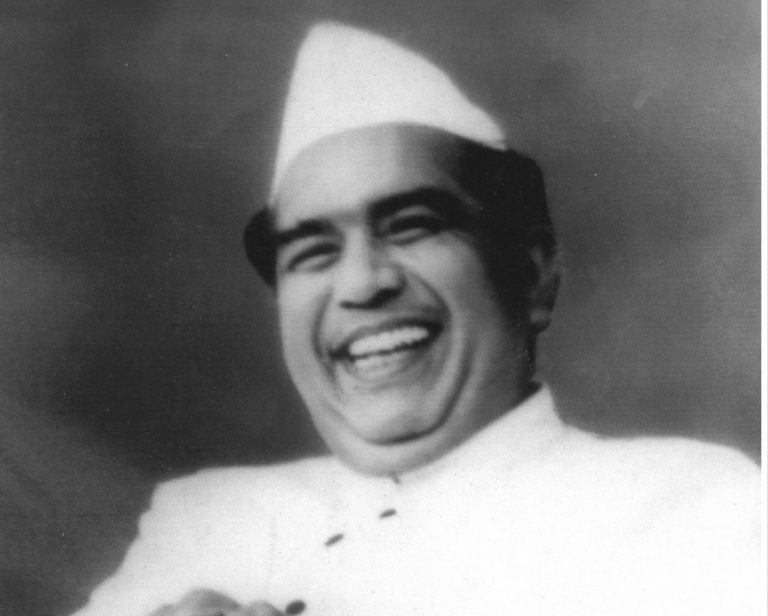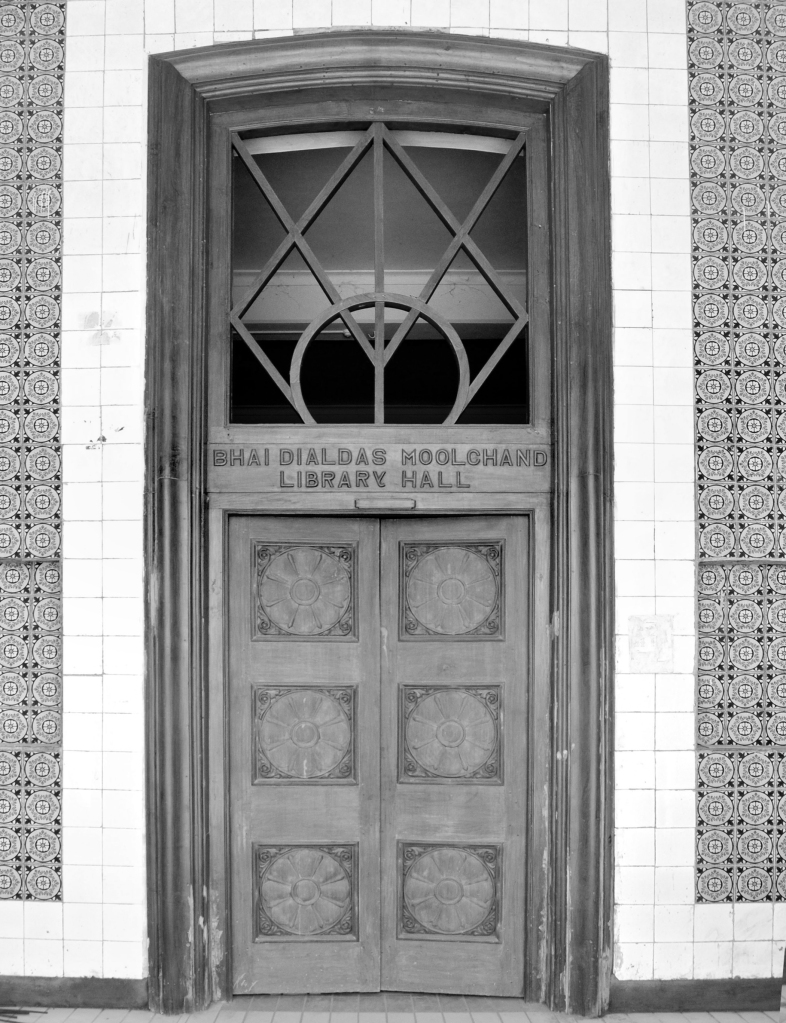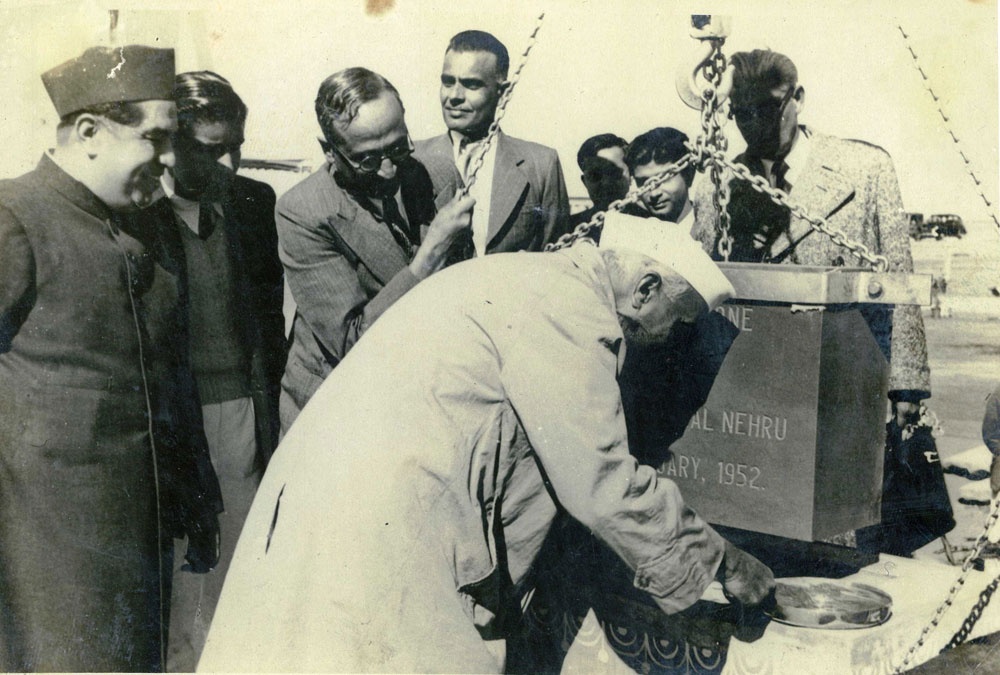
Bhai Pratap turned the business around, and it flourished over many countries, bringing wealth into Sindh. From his home in Hyderabad, he contributed in different ways to the struggle for freedom against British rule.
Cities are founded by governments, or by royalty. But the twin cities of Gandhidham-Adipur were founded by an ordinary citizen – Bhai Pratap.
By Saaz Aggarwal
I had a vague idea that my grandparents, Kishinchand and Devi Bijlani, had received generous help from someone called Bhai Pratap in getting settled in Bombay after they left their home in Sindh due to Partition. But I assumed that this was just another instance of a well-off Sindhi supporting others of the community. When his name came up repeatedly in my mother’s stories of her childhood in Sindh, I realized that he had been a substantial guiding influence on her family. But it was only after I began reading, writing and thinking more about Sindh and Sindhis that I understood what an extraordinary person Bhai Pratap had been.
Born on April 14, 1908 in Hyderabad to a Sindhworki family, Bhai Pratap inherited a crumbling business empire and dropped out of college to take over his family responsibilities. He turned the business around, and it flourished over many countries, bringing wealth into Sindh. From his home in Hyderabad, he contributed in different ways to the struggle for freedom against British rule.
After Partition, his efforts were focused on rehabilitating the community. With the help of Mahatma Gandhi and Vallabhbhai Patel, Bhai Pratap approached the Maharao of Kachchh, an area geographically, culturally and linguistically akin to Sindh. In January 1948, the Maharao generously donated 15,000 acres to the Sindhu Resettlement Corporation (SRC), a joint-stock company established by Bhai Pratap, to develop and manage civic amenities there.
Cities are founded by governments, or by royalty. But the twin cities of Gandhidham-Adipur were founded by an ordinary citizen, Bhai Pratap; Gandhidham as a commercial center, and Adipur for residences, schools, and social and cultural activities. Bhai Pratap also identified a creek in the kingdom which he began to develop into a port. With focused planning and intense personal efforts, he developed uninhabited barren wasteland, establishing a base for the bustling cities they have become.

Despite careful and extensive planning, unexpected disasters took place. After Independence, the 565 princely states of India, which had their own hereditary rulers and were identified as British ‘protectorates’, were offered the option of joining either India or Pakistan, or of remaining independent. The complicated process of accession was completed in 1950. When it was found that a number of the erstwhile rulers had written over large parcels of land to their relatives and favored courtiers prior to the accession, the Government of India declared all grants of land in the previous six months as ‘null and void’. This applied to the title of the 15,000 acres granted by the Maharao to SRC. Eventually, after due legal process, SRC was granted a 99-year lease for just 2600 acres in 1954; it would also remain subordinate to bodies run by the Government of India, including the Kandla Port Authority and the Gandhidham Land Development Board (Gehani, 2015).
Bhai Pratap too fell on bad times. He was arrested on the charge of misuse of imported goods. The case was filed in 1960, and it was 1965 by the time the charges against him were withdrawn and he was granted an honorable pardon. The years in prison took their toll and, his health failing, he died at the age of fifty-nine in August 1967.
Bhai Pratap is described, in a biography of Ram Jethmalani, as “an old Sindhi freedom fighter from the time of Independence, now a wealthy businessman.” (Adelman, 2014) Even worse than the taint of recent and questionable business wealth, how could someone who died at fifty-nine be described as ‘old’?
Lawyer Ram Jethmalani, a Sindhi hero, was responsible for representing the Sindhi community after Partition in legal cases, overturning the discriminatory Mumbai Refugee Act, and enforcing the inclusion of the Perso-Arabic script in Sindhi education (Gera, 2003). But he was also responsible for the release of Bhai Pratap being unnecessarily linked to another more ‘glamorous’ case he had been associated with.
The latter was a historic trial in which the jury, influenced by tabloid-created public opinion, acquitted the murderer of a Sindhi man, despite the initial confession and surrender being followed by evidence of premeditation and preparation. The verdict was rejected by the judge, whose decision was endorsed by both High Court and Supreme Court. However, the government of Bombay decided to pardon the murderer, and it was Ram Jethmalani who ensured that there was no outcry against the decision by the Sindhi community.

Jethmalani wrote, “If I remember correctly, Bhai and Nanavati were pardoned by the Governor on the same day. … For Bhai, his innocence had won the day, and for Nanavati, Prem’s sister joining the appeal had done the trick.” (Jagtiani, 2017) Somehow, however, public opinion twisted these facts into the mistaken notion that the releases were an exchange engineered by Ram Jethmalani through his influence on government authorities! The truth is that there was ample evidence of Bhai Pratap’s innocence, and an exchange was entirely superfluous.
As for Kandla – today it hosts one of India’s major ports. In 1952, its foundation was laid by Indian Prime Minister Jawaharlal Nehru. In 1955, it was designated a Major Port by Minister of Transport Lal Bahadur Shastri. In 1965, it was given the status of India’s first Special Economic Zone, a culmination of Bhai Pratap’s vision, determination and tremendous hard work in converting a sheltered natural cove into a lucrative international facility that shaped India’s international marine presence. And yet, there is no acknowledgement of Bhai Pratap’s contribution on any public document pertaining to Kandla Port.
____________________
 Excerpted from Sindhi Tapestry: an anthology of reflections on the Sindhi Identity edited and curated by Saaz Aggarwal, an independent researcher, writer and artist based in Pune, India. Her body of writing includes biographies, translations, critical reviews and humour columns.
Excerpted from Sindhi Tapestry: an anthology of reflections on the Sindhi Identity edited and curated by Saaz Aggarwal, an independent researcher, writer and artist based in Pune, India. Her body of writing includes biographies, translations, critical reviews and humour columns.
Courtesy: Saaz Aggarwal/ Sindh: Stories from a Vanished Homeland